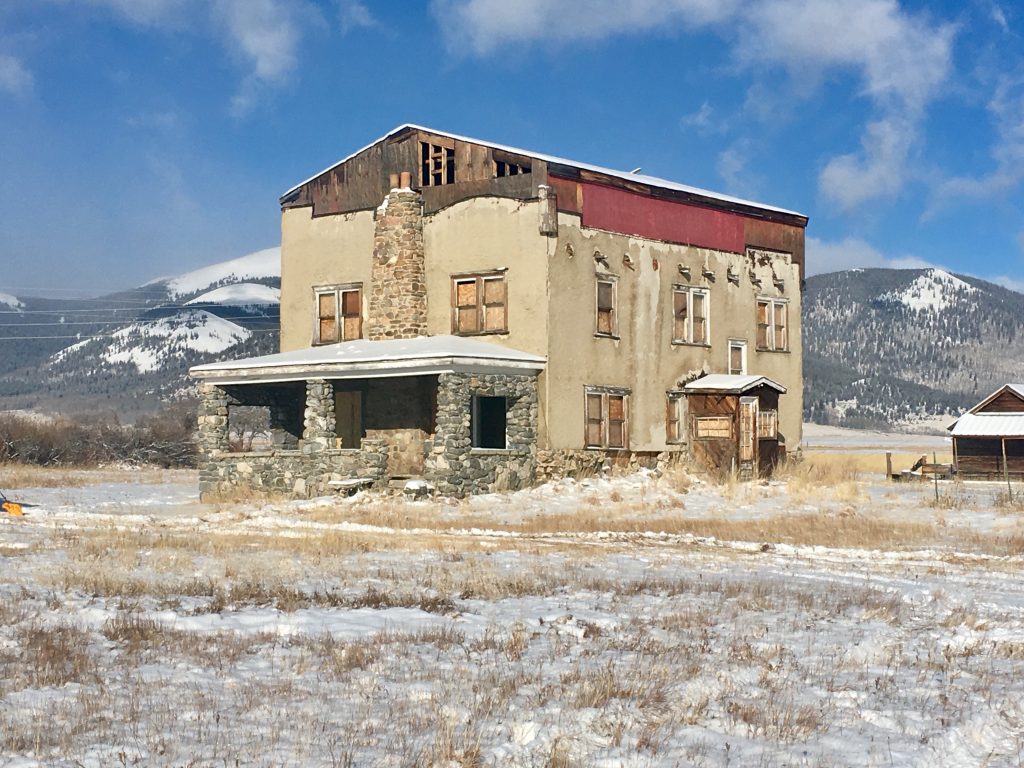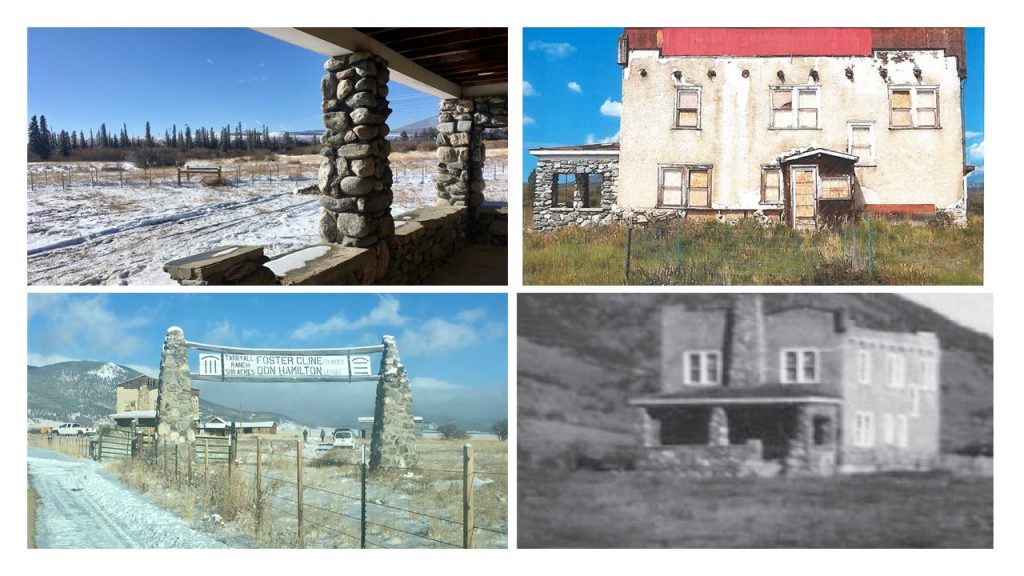Year Listed: 2018
County: Park County
Construction Date: 1928
Threat When Listed: Demolition by Neglect; Vandalism; and Severe Weather
Status: ALERT
Video courtesy of CBS4
For 90 years the eclectic Tarryall-Cline Ranch house has stood proudly like a sentinel amidst a beautiful meadow just off Highway 285 in Park County. The main ranch house was built in 1928 by the ranch owner, Foster Cline, Sr., a prominent Denver attorney. Cline was the deputy district attorney in Denver from 1913 to 1917 and again from 1925-1929 and was later the regional administrator for the U.S. Securities and Exchange Commission. The ranch house is a Park County landmark, located between the towns of Como and Jefferson, and was owned by, and associated with Cline and his family for most of its history. Cline himself never intended to live there full-time, but rented it out to a steady succession of ranch managers who operated hay and livestock businesses on site. Recently, 1,635 acres of the ranch on the west side of the highway that includes the main ranch headquarters complex, were purchased by Park County, with multiple public funding sources, including Great Outdoors Colorado (GOCO), the Colorado Habitat Stamp Program and the Park County Land and Water Trust Fund.
Architecturally, the main ranch house is an example of the Pueblo Revival style with elements of the Spanish Eclectic style, which is very unusual and rare for a ranch house in Colorado from the first half of the 20th century. The main ranch house, while of wood frame construction, was built to appear as if it is made of adobe and stucco, influenced by the Native American pueblos as well as Spanish Colonial buildings in New Mexico and the Southwest. The Pueblo Revival style was part of the movement towards eclectic architectural styles popular in the early decades of the 20th century.
A Historic Structure Assessment was completed for the property in 2011, and the main ranch house was noted to be in extremely poor condition, both inside and outside, due to age, poor drainage, lack of occupation and maintenance since its abandonment, and general exposure to the extreme weather elements present in Park County. The initial goals for the ranch include stabilization and protection from the elements and potential vandalism, followed by the development of partnerships to identify uses for the building that would complement the goals of the South Park National Heritage Area.
“These efforts are designed to preserve the places where natural, cultural and historic resources come together to form a cohesive landscape and community experience.”-Jason O’Brien Park County Department of Heritage, Tourism and Community Development
An EPP Weekend Workshop was held in May 2019, to mothball the site and fill all of the windows with SecureView clear boarding. A video has since been completed of the interior and exterior of the resource, as CPI continues to explore options with the Park County Heritage Area.





